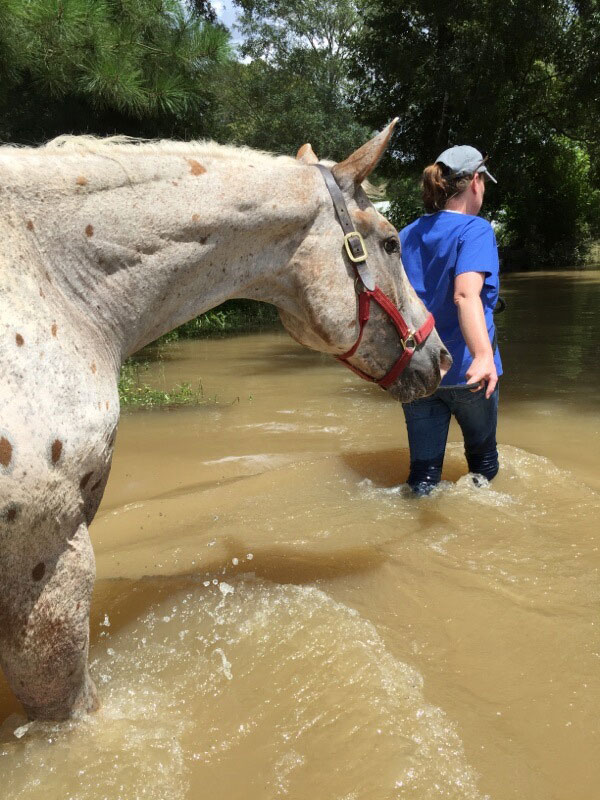LSU Vet Med is a leader in disaster response efforts
May 08, 2024

Dr. Laura Riggs, associate professor of equine surgery, walks a horse out of high water during the Louisiana 2016 floods.
Written by Julia Goodwin
When Hurricanes Katrina and Rita ravaged the Louisiana coastline and surrounding areas, the LSU School of Veterinary Medicine and the Louisiana State Animal Response Team (LSART) were well-positioned to help and are now a go-to source nationally for animal response.
As the 2024 hurricane season approached, LSU Vet Med held its annual weeklong Disaster Training and Response Boot Camp with LSART. This program provides training for animal safety in disaster situations and teaches core skills including evacuation procedures, large animal rescue, emergency management, shelter operations, slack water rescue, biosecurity, planning, and safety.
This year’s course participants included several third- and fourth-year students, ASPCA members, firefighters, animal control officers, veterinarians, and veterinary technicians.
Presenters were Lt. Gen. Russel Honoré, the Louisiana Department of Agriculture and Forestry (LDAF), the Louisiana Animal Control Advisory Task Force (LACATF), the Louisiana Animal Care & Control Association (LACCA), LSART, and LSU Vet Med instructors.
Dr. Mustajab Mirza, associate professor of equine surgery, led large animal disaster response labs and lectures.
“When disaster responders enter a community, it is important for them to work together with the local community members as a team,” he said.
Dr. Renee Poirrier, director of LSART, discussed the importance of pet sheltering during a natural disaster.
When a storm surges towards Louisiana, evacuation strategies tend to become frantic. Before Hurricane Katrina, she said, pets were often left behind amidst the chaos.
“People will go back into very dangerous situations to save their pet,” Dr. Poirrier said. “Katrina taught us that evacuation and sheltering pre-event is much better than rescue post event.”
Since then, evacuation laws were updated and the needs of pets were included in emergency plans.
“The state began working on pet evacuation and sheltering right after Katrina in 2005 and tested the protocols in 2008 for Hurricane Gustav,” said Dr. Poirrier. “For the first time, people who needed assistance with transportation were evacuated and sheltered with their pets and returned home.”
The safest place for animals to be during a hurricane is with their owners, somewhere safe away from the storm.
“Pets are members of the family and should be included in evacuation plans,” she said. “Evacuation can be chaotic, but here in Louisiana our state and local emergency management work hard to not leave people or pets behind.”